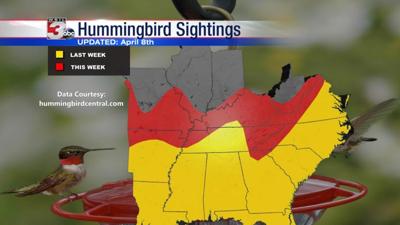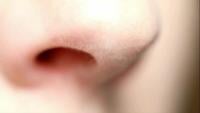WSIL â€� The familiar buzzing of hummingbirds will soon be heard once again across the region as the tiny birds migrate northward for the warmer months of the year. As of April 8, sightings of hummingbirds had been reported as far north as St. Louis according to the .Ìý
Hummingbirds are among the world’s smallest birds and are only found in the Western Hemisphere, making up the Trochilidae family. Their metabolism is the fastest of any animal on the planet, with heart rates up to 1260 beats per minute, and and breathing at 250 breaths per minute even at rest.Ìý
In our region, we mainly see ruby-throated hummingbirds. They’re the most common of the hummingbird species east of the Mississippi River. The ruby-throated hummingbird is properly named with the adult males sporting a ruby red patch on their throats. This is called a "gorget". The females are slightly larger than the males, but they don’t have the red patch, instead having a white throat.Ìý
The ruby-throated hummingbird migrates to southern Florida, southern Mexico, and Central America for the winter. Then, they return northward when the weather gets warmer in the spring and flowers begin to bloom.Ìý
The hummingbird’s diet is made up of nectar from flowers, insects, pollen, and tree sap.Ìý
If you’re putting out a hummingbird feeder, most experts suggest that it’s not necessary to buy commercially produced nectar. Often times, these mixes includes additional vitamins and protein, but the birds can get everything they need naturally through flowers and insects.Ìý
A simple recipe of one part white cane sugar to four parts water will do the trick.Ìý
If the sugar solution in your feeder turns white or cloudy, then it’s spoiled and should be replaced. During the heat of the summer, this can happen in as little as two days.














